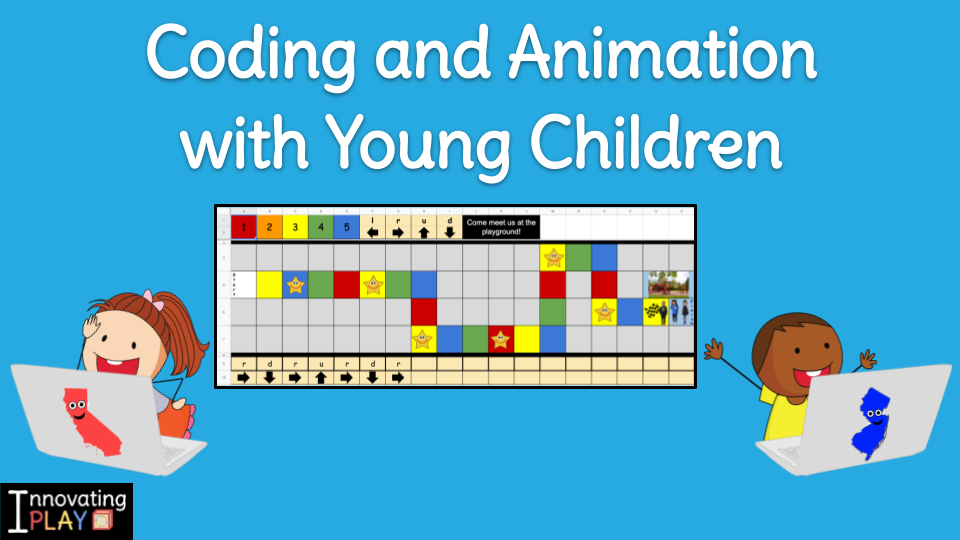
Expanding Curiosity Through Collaboration
As teachers of young children, we are always reaffirming the value of play as part of learning while considering new ways to explore, visualize, conceptualize, and create. One of the wonderful discoveries that we have made through our cross-country collaboration between our kindergarten classes, is that we have the opportunity to find depth in the wonders children have about each other through a different lens.
Since their curiosities are not easily answered by being in the same space, we have to find alternatives for discovery. Having time and space between us allows us to slowly notice, ponder, build on ideas, and then explore ways we might learn and play in innovative ways.
Coding Between Classrooms to Foster Social Interaction & Discovery
Children are naturally curious about what other children enjoy. We hear the children saying things like: Do our California buddies know about this too? Do the children in New Jersey have a place like this near them?
This year, we found children often wondering about places in the world that other children might enjoy or have experienced. Using this observation as a starting point, Christine guided the children in California to help them initiate a learning experience for their peers in New Jersey. This would be a way to begin to share more about their places of interest, while offering the opportunity to explore the idea of coding together.
After inviting the children in New Jersey to prepare for the experience by trying out Kodable, they created a Kmail message in Google Slides (Innovating Play Book, page 86) to invite the children to play through a kid-created coding challenge.
An explanation and view of the process, along with the completed experience, can be found in the video and class book which was published as a culmination to this collaborative project.
The class book was made available digitally, and in a hard copy. The hard copy was printed out and pages were laminated so that children could use dry erase markers to follow and check the code.
Reimagining Friendship Through Visual Experiences
After making discoveries about places that the children in California enjoy, the children in New Jersey were eager to share back and reciprocate. Communication continued through the Kmail framework in order to initiate the next collaborative adventure.
As part of this experience children in both classes participated in hands-on writing and drawing experiences to communicate their ideas back and forth. This included:
- Brainstorming favorite places and things to do at the park (New Jersey)
- Illustrating and writing an appropriate question to include their buddy in play (New Jersey)
- Writing an appropriate answer to respond to a social invitation to play (California)
- Drawing detailed self-portraits (New Jersey & California)
Teachers used the following tools to create the visual experience to reflect back between children:
- Animated Drawings by Meta AI Research: Animates photos of drawings that children have completed using hands-on materials.
- Unscreen: Removes the background from animations so that they may be added to different backgrounds and settings.
- Canva: Video creation space which allows for all visuals to come together to be shared back with children and families.
Reflections
Using alternative approaches to support wondering and social language between peers from different locations offers new ways to break down interactions and develop curiosity about others. While technology often forces a faster pace, when used intentionally with young children, it can also open up opportunities to slow down as we ponder, create, and discover together.
Reflections for Educators:
- What natural curiosities are your young learners communicating about others?
- How can you nurture social curiosity and capture interactions between young students by including technology as part of learning and play?
- How can creating alternative visual experiences transfer back to natural conversations and interactions between children?
